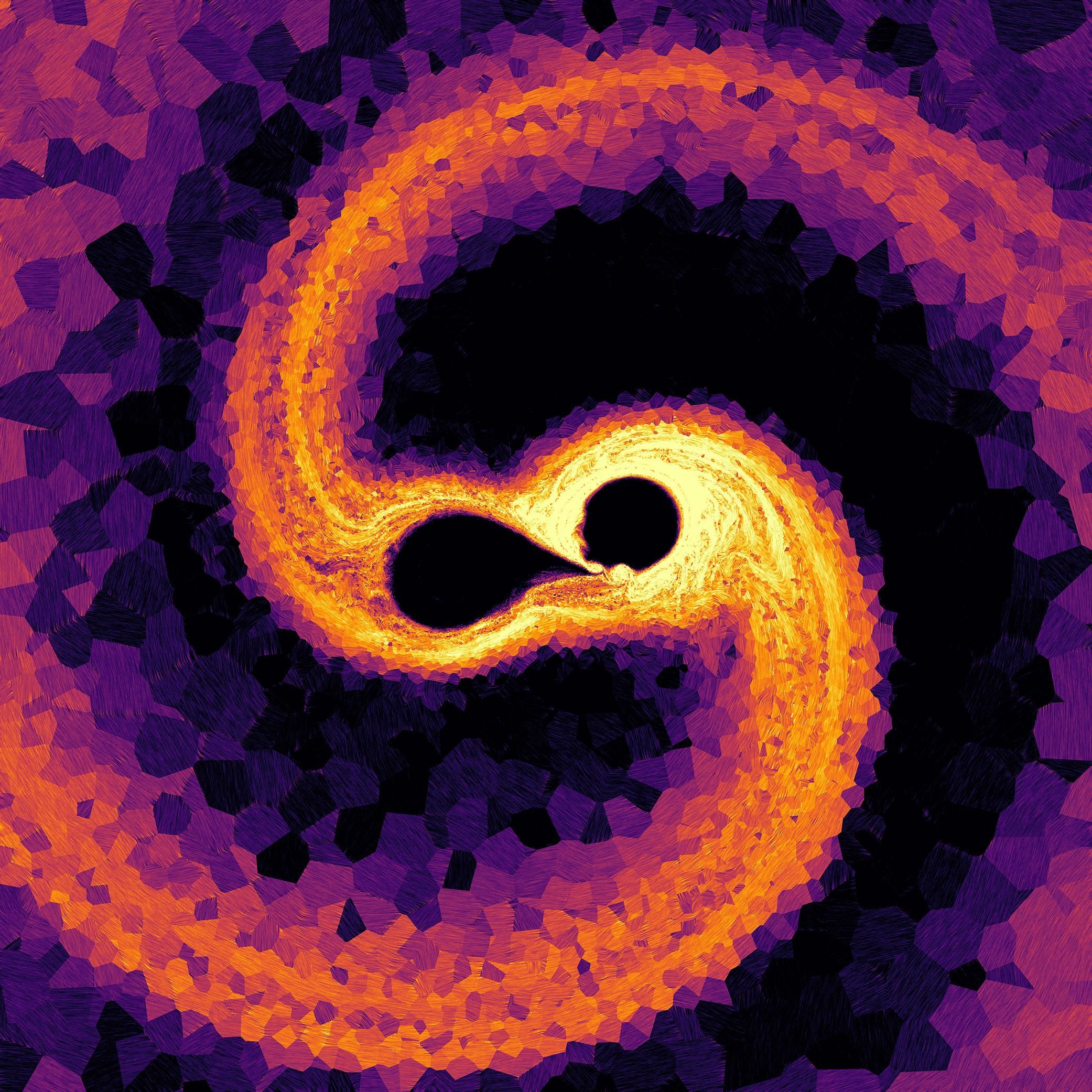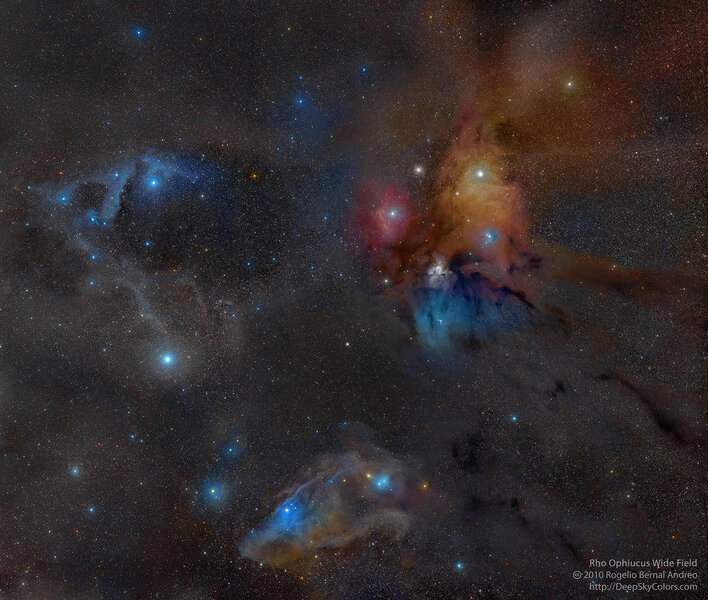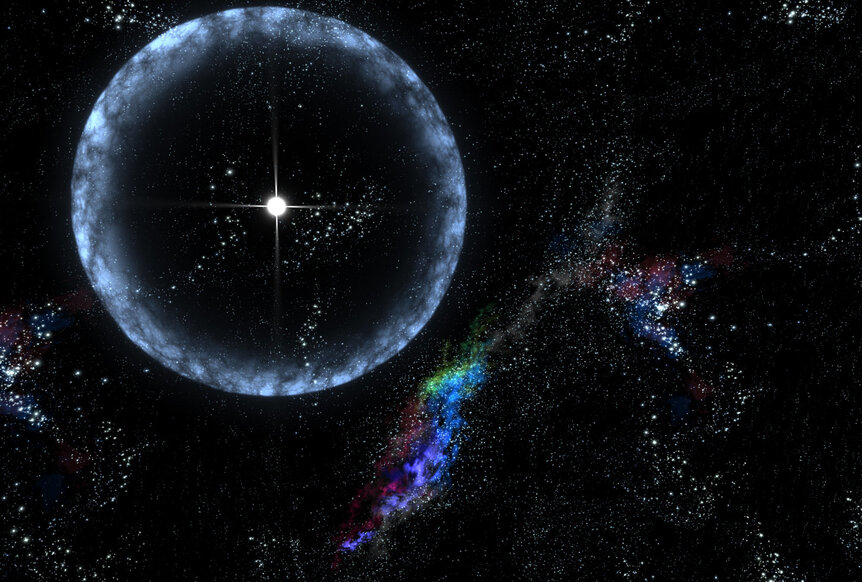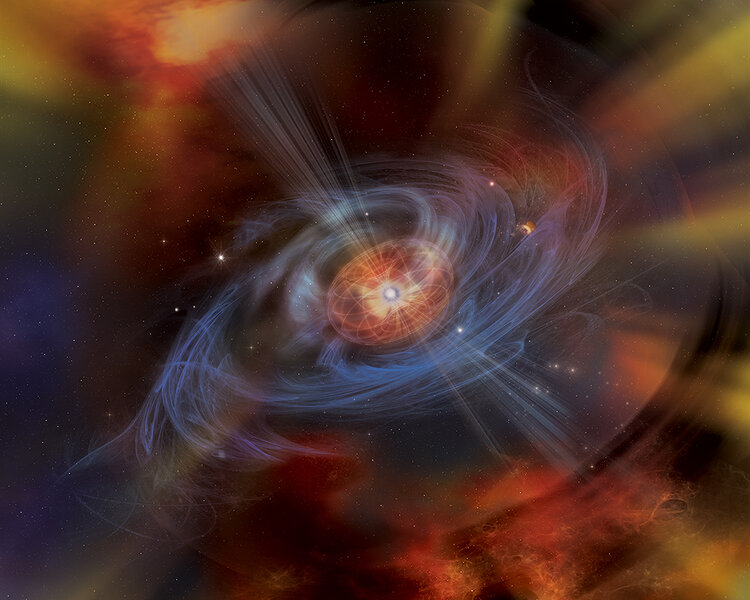Create a free profile to get unlimited access to exclusive videos, sweepstakes, and more!
Magnetars are the most powerful magnets in the Universe. Here's how they're made.

Tau Scorpii is a rather unassuming-looking star in the southern sky. If you've gone stargazing in the summer you've probably seen it; it's located right next to Antares, the bright red supergiant star that marks the heart of Scorpius, the scorpion. Tau Sco is literally the next star down the body of the scorpion. Antares is over 7 times brighter, so your eye may have slid right past Tau Sco without you even noticing.
Next time you're out on a warm summer night, take special care to see it. Because Tau Sco has a bizarre history, and its future is no less amazing. One day it will explode, and in its death it may very well create the most terrifying object in the Universe this side of a black hole: a magnetar.
A new study shows this may very well be the case. But to see why we have to back up just a bit.
Tau Sco is a massive star, with about a dozen times the mass of the Sun and 6 times the Sun's diameter. It's very luminous, blasting out about 30,000 times the light the Sun does. That's already pretty cool, though not that unusual; lots of stars in the sky are even more massive and brighter.
What makes Tau Sco stand out is that it has a strong and complex magnetic field. That's highly unusual for massive stars, because they don’t have a big convective layer. Inside the Sun, for example, heat is generated in the core and works its way upward radiatively, literally by light. Just above the core, though, conditions change where it becomes more efficient to move that heat convectively, with hot material rising buoyantly (just like warm air in a balloon causing it to rise in cooler air).
As the Sun rotates, this material in the convective layer generates a magnetic field — a basic law of physics is that moving charged particles generate a magnetic field, and in this layer of the Sun the particles are moving around as a group, generating the magnetism (this is of course hugely oversimplified, but if you want more, try here). When this material gets to the Sun's surface, the magnetic field is dragged along with it, so we see lots of magnetism across the Sun's surface. On average the magnetic field strength of the Sun is about twice Earth’s.
But in massive stars things are different. The conditions deep inside the star make the convective region very small, and most of the heat gets out radiatively. Because of that, we don't often see magnetic massive stars. Only about 10% of these massive stars are magnetic, and that's a mystery. Why do they exist at all? And Tau Sco is even worse, because its magnetic field is all tangled up and weird, and very strong: about 300 times Earth's. At least.
It gets weirder. We know Tau Sco is part of a loose association of stars called the Upper Scorpius Association. This is a group of stars, including several massive ones, that are about 11 million years old, and all move together through space (which is how we know they're related). Tau Sco, though, looks much younger. Using various methods, it appears that it's anywhere from 2 to 6 million years old. So why does it look young, and why does it have such a strong magnetic field?
For a while now astronomers have suspected that it may be due to — get this — two stars colliding and merging. We've seen this happen; the star V838 Monocerotis is a classic (and stunningly spectacular) example. In the case of Tau Sco, the models seem to show that the merger occurred as it was forming. It was born as two protostars, very close together. Before they could even fully form, though, they merged into one star. Studies from a few years back show that this can create differential rotation, where different layers of the star rotate at different speeds. Like convection, this can also set up a strong magnetic field, even though the star is mostly radiative.
The new research seems to confirm that. Using the physics of the interiors of stars (what they're made of, how they generate heat and light, how they spin, what magnetic properties they have, and so on), the scientists used computer modeling to see what happens when two stars like this merge. What they found is that this can in fact make a massive star with a strong magnetic field, and also make the star look younger — among other things it changes the color of the star, giving it a youthful blue glow. And it shows that this should happen about 10% of the time. So this really does seem to explain a lot of what we actually see!
That's pretty cool, and does seem to solve the mystery. But the research also has other ramifications, especially about what happens when a star like this dies.
Normally, a star with this mass lives for a few million years, and then explodes as a supernova. Only the outer layers blow off, though; the core actually collapses, becoming an über-dense neutron star. This is an object with the mass of the Sun squeezed into a ball just a few kilometers across, spinning rapidly, and — this is the key part — with a very strong magnetic field.
But there exists a rare subclass of neutron star called a magnetar. These are magnetic monsters, with a magnetic field that can be up to a quadrillion times the Earth's magnetic strength! Only a handful are known in the galaxy, which is a good thing. Magnetars are known to sometimes flare, where its crust cracks, causing a monumental shift in the star's magnetic field. It emits a ridiculously powerful blast of radiation: In 2004, such a magnetar wave swept over the Earth, noticeably compressing our own magnetic field and generating such a fierce blast of energy that it temporarily blinded gamma-ray satellites.
This colossal explosion was generated by SGR 1806-20, a magnetar 50,000 light years away… halfway across the galaxy!
So yeah. Magnetars are terrifying.
And the new research indicates that when Tau Sco explodes, creating a magnetar also may well be its fate. The bad news is that Tau Sco is only about 500 light years away. Yikes! But the very good news is that it won't explode for a long, long time. Millions of years, certainly. So I’m not particularly worried about it on a personal level.
In the more immediate term this is still good news, because it means we’re learning more about massive stars, magnetic stars, merging stars (!), and magnetars themselves. And in the meantime, a couple more stars like Tau Sco have been found (happily, even farther away), which means more observational opportunities to learn about these weird objects.
A final point: Literally a century ago, we didn't know how stars worked. There wasn't a theory of nuclear fusion just yet, and it wasn’t until the 1940s or so that we began to truly get a start in understanding what processes went on inside stars. Our knowledge has grown so much since then that we now know a lot about how stars like the Sun behave, as well as ones much lower and much higher in mass. And we can even figure out how the odd ones work, the ones that don’t quite fit in with the majority of stars around them.
That's amazing. Science is a process of learning, and when it comes to astronomy that sometimes means focusing in narrowly on a few objects because their behavior is so bizarre. And when we do figure them out we find out their entire history, from their past youth to their future spectacular demise, is simply mind-blowing. The Universe is a truly astonishing place, and I love that, with science, we can know in detail just how astonishing it is.






























